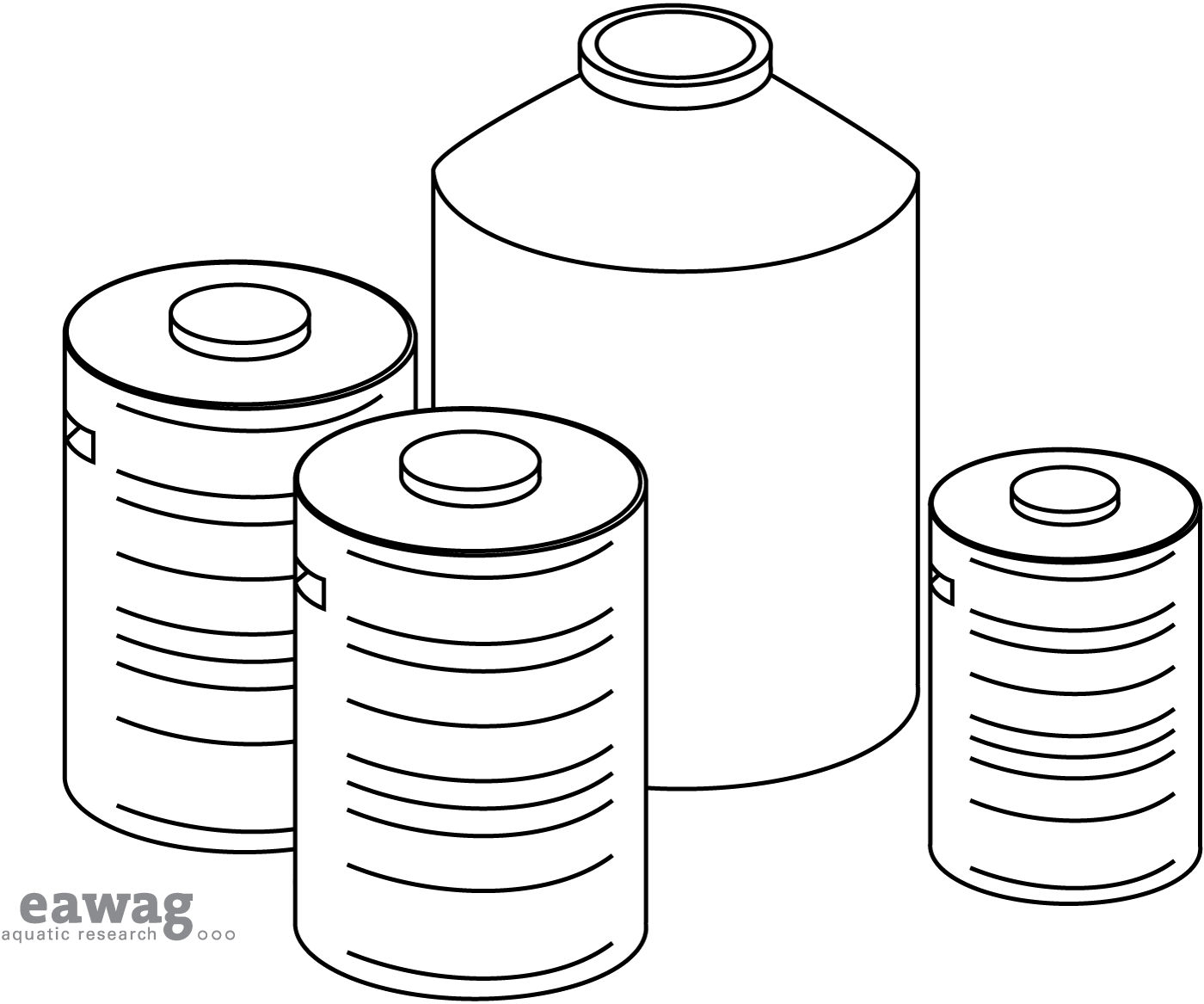Difference between revisions of "Urine Storage Tank / Container"
| Line 21: | Line 21: | ||
| − | '''When urine cannot be used immediately or transported using a Conveyance Technology (i.e. Jerrycans) it can be stored onsite in containers or tanks. The Storage Tank must then be moved or emptied into another container for transport. ''' | + | '''When urine or faeces cannot be used immediately or transported using a Conveyance Technology (i.e. Jerrycans or oil drums) it can be stored onsite in containers or tanks. The Storage Tank must then be moved or emptied into another container for transport. ''' |
The Storage Tank should be appropriately sized to accommodate the number of users and the time required to sanitise the urine. The storage guidelines for urine correspond to the temperature of storage and the intended crop, but all urine should be stored for at least 1 month (see WHO guidelines for specific storage and application guidelines). Smaller volume Storage Tanks can be used and transported to another, centralized Storage Tank at, or close to, the point of use (i.e. the farm). | The Storage Tank should be appropriately sized to accommodate the number of users and the time required to sanitise the urine. The storage guidelines for urine correspond to the temperature of storage and the intended crop, but all urine should be stored for at least 1 month (see WHO guidelines for specific storage and application guidelines). Smaller volume Storage Tanks can be used and transported to another, centralized Storage Tank at, or close to, the point of use (i.e. the farm). | ||
Revision as of 14:21, 4 March 2009
|

|
|
| |||||||||||||||||||||||||||||||
When urine or faeces cannot be used immediately or transported using a Conveyance Technology (i.e. Jerrycans or oil drums) it can be stored onsite in containers or tanks. The Storage Tank must then be moved or emptied into another container for transport.
The Storage Tank should be appropriately sized to accommodate the number of users and the time required to sanitise the urine. The storage guidelines for urine correspond to the temperature of storage and the intended crop, but all urine should be stored for at least 1 month (see WHO guidelines for specific storage and application guidelines). Smaller volume Storage Tanks can be used and transported to another, centralized Storage Tank at, or close to, the point of use (i.e. the farm).
Mobile Storage Tanks should be plastic or fibreglass, but permanent Storage Tanks can be made of concrete or plastic. Metal should be avoided as it can be easily corroded by the high pH of stored urine.
With storage time, a layer of organic sludge and precipitated minerals (primarily calcium and magnesium phosphates) will form on the bottom of the tank. Any tank used for urine storage should have an opening large enough so that it can be cleaned and/ or pumped out.
Neither the Storage Tank, nor the collection pipes should be ventilated, but they both need to be pressure equalized. If the Storage Tank is emptied using a vacuum truck, the inflow of air must be maintained at a sufficient rate to ensure that the tank does not implode due to the vacuum.
If the Storage Tank is connected to the toilet or urinal directly with a pipe, care should be taken to minimize the length of the pipe since precipitates will accumulate. If pipes must be used, they should have a steep slope (greater than 1% slope), no sharp angles, large diameters (up to 110mm for underground pipes) and be easily removable in case of blockages.
To minimize odours, the tank should be filled from the bottom, i.e. the urine should flow down through a pipe and be released near the bottom of the tank; this will prevent the urine from spraying as well as prevent back-flow.
| Advantages | Disadvantages/limitations |
|---|---|
| - Can be built and repaired with locally available materials - No electrical energy required - Can be used immediately - Small land area required - Low capital and operating costs |
- Mild to strong odour when opening and emptying tank (depending on storage conditions) |
Adequacy
Long-term storage is the best way to sanitize urine without the addition of chemicals or mechanical processes.
Urine Storage Tanks can be used in virtually every environment; tanks should be well-sealed to prevent leaks, infiltration and evaporation. Urine Storage Tanks can be installed indoors, outdoors, above ground and below ground depending on the climate, space available, and soil.
Health Aspects / Acceptance
The risk of disease transmission from stored urine is low. Extended storage with storage times greater than 6 months provides near complete sanitation.
Maintenance
A viscous sludge will accumulate on the bottom of the Storage Tank. When the Storage Tank is emptied, the sludge will usually be emptied along with the urine, but if a tap is used and the tank is never fully emptied, it may require desludging. The desludging period will depend on the composition of the urine and the storage conditions.
Mineral and salt build-up in the tank or on connecting pipes can be manually removed (sometimes with difficulty) or can be dissolved with a strong acid (24% acetic).
Movie
Manual - How to build
References and external links
- Elizabeth Tilley et.al (2008). Compendium of Sanitation Systems and Technologies (low res version). Department of Water and Sanitation in Development Countries (Sandec) at the Swiss Federal Institute of Aquatic Science and Technology (Eawag). (Provides a full overview of sanitation systems.)
- GTZ (2007). Technical data sheet, urine diversion: Piping and storage. GTZ, Germany. Available: www.gtz.de
- Kvarnström, E., et al. (2006). Urine Diversion - One step towards sustainable sanitation. Report 2006-1. Ecosan Res: Ecosan Publication Series, Stockholm. Available: www.ecosanres.org
- WHO (2006). Guidelines for the safe use of wastewater, excreta and greywater- Volume 4: Excreta and greywater use in agriculture. WHO, Geneva. Available: www.who.int
